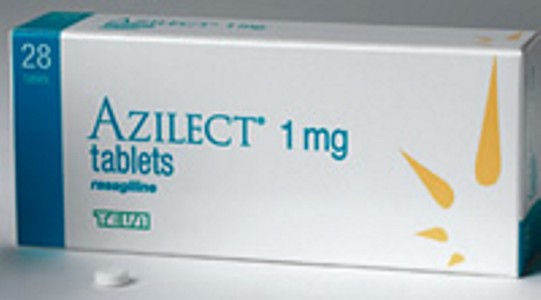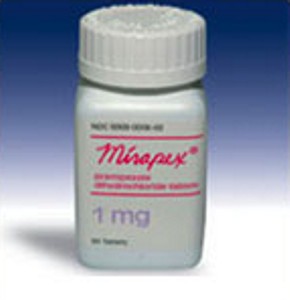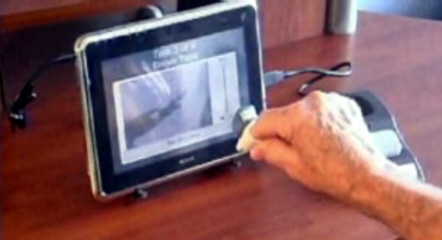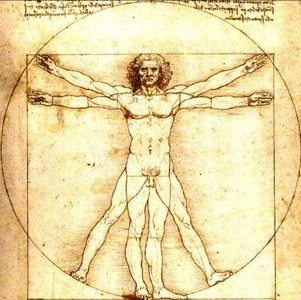.gif) VIARTIS � |
||||||
|
PARKINSON'S DISEASE |
||||||
| � � |
||||||
|
� � � � |
PARKINSON'S DISEASE NEWS � |
� � � � � � � � � � � � � � � |
||||
|
OCTOBER 2011 ������������������ ������������������������������������������������������������������������������������������������������������������������������ 29th October 2011 - New clinical trial CLINICAL TRIAL OF DIABETIC DRUG FOR PARKINSON'S DISEASE
A drug normally used for diabetes, called Pioglitazone, is to undergo
clinical trials in people with early Parkinson�s Disease. The aim is to
determine whether it can slow clinical decline over a 44 week
period. Pioglitazone is being given in 15mg and 45 mg dosages.
For full details of the clinical trials go to
PDtrials and�
ClinicalTrials.gov.
� 28th October 2011 - New book MOVEMENT DISORDERS 4 Anthony H.V.Schapira, Anthony E.T.Lang, Stanley Fahn
� 19th October 2011 - News release AZILECT FAILS TO SLOW PARKINSON'S DISEASE PROGRESSIONIn It has been claimed by the FDA (the U.S. drug administrators) that Azilect fails to slow the progression of Parkinson's Disease. Azilect is the brand name of Rasagiline, which is an MAO-B inhibitor. MAO-B inhibitors increase dopamine levels by inhibiting Monoamine Oxidase B, which is an enzyme that metabolizes dopamine. Rasagiline is used either on its own or alongside other methods. For more information go to Azilect. The manufacturer, TEVA, claimed that the 1 mg dose of rasagiline (in the ADAGIO clinical study) and the 2 mg dose of rasagiline (in the TEMPO clinical study) could demonstrate a disease modifying benefit in patients with early untreated idiopathic Parkinson�s disease. However, the FDA's analyses "do not support the claim for a disease modifying benefit associated with either dose of rasagiline based on the primary protocol specified analyses or when sensitivity / secondary analyses are applied to the study data sets." For more information go to the FDA report.
� 16th Octo ber 2011 - New researchPRAMIPEXOLE CLINICAL TRIAL RESULTSNeurology [2011] 77 (8) : 759-766 (W.Poewe, O.Rascol, P.Barone, R.A.Hauser, Y.Mizuno, M.Haaksma, L.Salin, N.Juhel, A.H.Schapira) �Complete abstract Neurology [2011] 77 (8) : 767-774 (A.H.Schapira, P.Barone, R.A.Hauser, Y.Mizuno, O.Rascol, M.Busse, L.Salin, N.Juhel, W.Poewe) Complete abstract
Clinical trials compared the clinical efficacy in Parkinson's Disease of
the more convenient to use extended-release (ER) formulation of the dopamine
agonist pramipexole, and the standard immediate-release (IR) pramipexole.
Pramipexole is also known as Mirapex, Mirapexin, or Sifrol.
For more information go to
Mirapex
and
Mirapex ER. In the first clinical trial, both forms of pramipexole
were more effective than a placebo. Both formulations
� 13th Octo ber 2011 - New productWIRELESS SENSOR FOR MEASURING PARKINSON'S DISEASE TREMOR
Kinesia HomeView device has been developed to assess Parkinson's Disease
tremor. It has been approved for sale in the U.S.A. and several other
countries. It combines wireless sensors and a touch-screen tablet to help
patients and physicians assess whether medications or neurostimulation
therapy are working properly. The patient takes home a motion sensor worn
on the finger, plus a touch-screen tablet that includes videos explaining
how to take Unified
� 9th October 2011 - History LEONARDO DA VINCI'S DESCRIPTIONS OF PARKINSON'S DISEASEThe Italian artist, engineer and scientist Leonardo da Vinci (1452-1519) also studied anatomy, physiology and medicine. Leonardo da Vinci kept secret notebooks in which he wrote and sketched his ideas and observations, in handwriting that only he could read. So keen was he to study the human body that he went out at night to dissect human corpses. For more information go to Leonardo da Vinci. Over 300 years before James Parkinson formally described Parkinson's Disease, Leonardo da Vinci saw people whose symptoms coincided with those seen in Parkinson's Disease. Leonardo wrote in his notebooks that "you will see.....those who.....move their trembling parts, such as their heads or hands without permission of the soul; (the) soul with all its forces cannot prevent these parts from trembling." In a translation of Da Vinci's notebooks "The movements of paralytics of those benumbed by cold, whose head and members move without control of the soul, who cannot stop the movements." The combination of difficulty with voluntary movement ("paraletici") and tremor ("tremanti') leave little doubt of the diagnosis of Parkinson's Disease. At the end of his life Leonardo was unable to paint due to the loss of control of movement in his hands. It has been suggested that, by then, Leonardo da Vinci had Parkinson's Disease himself. Due to most of his notebooks remaining secret for centuries, Leonardo did not receive any credit for contributing to the recognition of Parkinson's Disease. In order to refer to this article on its own click here.
� � � �������� �9th October 2011 - News release WORLD'S BEST EVER SQUASH PLAYER DIAGNOSED WITH PARKINSON'S DISEASE
� 8th October 2011 - New research THE EFFECT OF BALANCE TRAINING ON PARKINSON'S DISEASE Neurorehabil Neural Repair. [2010] 24 (9) : 826-834 (N.Smania, E.Corato, M.Tinazzi, C.Stanzani, A.Fiaschi, P.Girardi, M.Gandolfi) Complete abstract
Postural instability is a disabling sign of Parkinson's Disease that is not
easily amenable to treatment with medication. The effect of balance training on
postural instability was evaluated in people with Parkinson's Disease. People
with postural instability were randomly assigned to balance training or for
general physical exercises. Each person received 21 treatment sessions of 50
minutes each. People were evaluated using the following scales : Berg Balance
Scale (BBS), Activities-Specific Balance
Confidence
Scale (ABC), postural transfer test, self-destabilization
�
��
|
||||||
| � | ||||||
.gif) |
||||||
| � | ||||||
| �2006-2011 Viartis | ||||||
| � | ||||||
| [email protected]� | ||||||
 Pioglitazone
is an FDA approved drug for the treatment of diabetes. It has not been
previously studied in people with Parkinson's Disease.
Pioglitazone is marketed in tablet form as Actoplus, Duetact, and Actos.
It
acts primarily by decreasing insulin resistance. For more information go
to
Pioglitazone
is an FDA approved drug for the treatment of diabetes. It has not been
previously studied in people with Parkinson's Disease.
Pioglitazone is marketed in tablet form as Actoplus, Duetact, and Actos.
It
acts primarily by decreasing insulin resistance. For more information go
to  Publisher's
description : Movement Disorders 4, the newest volume in the Blue Books in
Neurology series provides you with access to practical, clinical guidance on the
diagnosis and pharmacologic treatment on the full range of movement disorders.
Emphasizes the vast array of pharmacologic therapeutics, backed by clinical
trials of the past 15 years to help you determine the best and most up-to-date
drug therapy. Presents the surgical management of Parkinson's Disease to help
you determine when to recommend surgery and for which patients. Includes
comprehensive information on Parkinson's so you can better diagnose and treat
patients.�Offers
more clinical details on tremors, differentiating between PD and other movement
disorders.
�
Publisher's
description : Movement Disorders 4, the newest volume in the Blue Books in
Neurology series provides you with access to practical, clinical guidance on the
diagnosis and pharmacologic treatment on the full range of movement disorders.
Emphasizes the vast array of pharmacologic therapeutics, backed by clinical
trials of the past 15 years to help you determine the best and most up-to-date
drug therapy. Presents the surgical management of Parkinson's Disease to help
you determine when to recommend surgery and for which patients. Includes
comprehensive information on Parkinson's so you can better diagnose and treat
patients.�Offers
more clinical details on tremors, differentiating between PD and other movement
disorders.
� In
fifteen previous studies Rasagiline caused a moderate reduction in symptoms. It
caused a moderate reduction in "off" time in four of those studies. The
treatment effect was still evident six weeks after drug discontinuation. One of
those studies found Rasagiline to be more effective than Selegiline, which is
another MAO-B inhibitor. However, these studies did not demonstrate any slowing
of Parkinson's Disease progression. Rasagiline caused infrequent cardiovascular or
psychiatric side effects. In order to refer to this article on its own
In
fifteen previous studies Rasagiline caused a moderate reduction in symptoms. It
caused a moderate reduction in "off" time in four of those studies. The
treatment effect was still evident six weeks after drug discontinuation. One of
those studies found Rasagiline to be more effective than Selegiline, which is
another MAO-B inhibitor. However, these studies did not demonstrate any slowing
of Parkinson's Disease progression. Rasagiline caused infrequent cardiovascular or
psychiatric side effects. In order to refer to this article on its own
 (extended
release and immediate release) were similarly effective in Parkinson's Disease
and were equally tolerated. In the second clinical trial, both forms of
pramipexole were more effective than a placebo. Off times decreased by up to 150
minutes per day, but a placebo achieved an 84 minute reduction in� off
times, thereby lessening the actual reduction in off time to just over an hour
per day. Immediate release pramipexole was slightly more effective than
extended-release pramipexole, but otherwise, extended-release pramipexole
could be readily substituted for immediate-release pramipexole. In order to refer to this article on its own
(extended
release and immediate release) were similarly effective in Parkinson's Disease
and were equally tolerated. In the second clinical trial, both forms of
pramipexole were more effective than a placebo. Off times decreased by up to 150
minutes per day, but a placebo achieved an 84 minute reduction in� off
times, thereby lessening the actual reduction in off time to just over an hour
per day. Immediate release pramipexole was slightly more effective than
extended-release pramipexole, but otherwise, extended-release pramipexole
could be readily substituted for immediate-release pramipexole. In order to refer to this article on its own
 Parkinson�s
Disease Rating Scale tests. The tablet gives reminders to take the test
several times a day. It measures tremors and, with a built-in camera,
records videos of patients whilst taking the test. Patients can keep a
diary of their symptoms on the tablet. Via a Web portal, physicians get a
report from the system showing the types of tremors and the time of day of
each test. Users can also watch videos of the tremors. For a video of the
procedure
Parkinson�s
Disease Rating Scale tests. The tablet gives reminders to take the test
several times a day. It measures tremors and, with a built-in camera,
records videos of patients whilst taking the test. Patients can keep a
diary of their symptoms on the tablet. Via a Web portal, physicians get a
report from the system showing the types of tremors and the time of day of
each test. Users can also watch videos of the tremors. For a video of the
procedure
 �
�




 Jansher
Khan, who is arguably the world's best ever squash player has been diagnosed
with Parkinson's Disease at the age of 42, following a series of tests.
During his career, Jansher Khan won the World Open a record eight times, and the
British Open six times. Jansher Khan officially announced his retirement from
squash in 2001. He had won 99 professional titles and was ranked the World No.1
for over six years. Jansher Khan has been showing signs of a mystery
illness since last year. His hands would start shaking suddenly. Sometimes he
used to act strangely as he his mind went out of control.
For more information go to the�
Jansher
Khan, who is arguably the world's best ever squash player has been diagnosed
with Parkinson's Disease at the age of 42, following a series of tests.
During his career, Jansher Khan won the World Open a record eight times, and the
British Open six times. Jansher Khan officially announced his retirement from
squash in 2001. He had won 99 professional titles and was ranked the World No.1
for over six years. Jansher Khan has been showing signs of a mystery
illness since last year. His hands would start shaking suddenly. Sometimes he
used to act strangely as he his mind went out of control.
For more information go to the�
 of the centre of foot
pressure test, number of falls, Unified Parkinson's Disease Rating Scale
(UPDRS), modified Hoehn and Yahr (H&Y) Scale, and Geriatric Depression
Scale (GDS). Those undergoing balance training showed improvements in all outcome measures, except for the UPDRS and the
H&Y scale. No significant changes in performance were observed in those
undergoing general physical exercise, showing that a program of balance training
can improve postural instability in people with Parkinson's Disease. In order to
refer to this article on its own
of the centre of foot
pressure test, number of falls, Unified Parkinson's Disease Rating Scale
(UPDRS), modified Hoehn and Yahr (H&Y) Scale, and Geriatric Depression
Scale (GDS). Those undergoing balance training showed improvements in all outcome measures, except for the UPDRS and the
H&Y scale. No significant changes in performance were observed in those
undergoing general physical exercise, showing that a program of balance training
can improve postural instability in people with Parkinson's Disease. In order to
refer to this article on its own